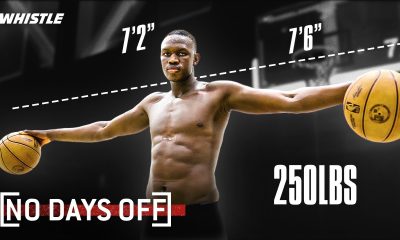NIL
Peace between Israel and Syria is possible, Damascus businessman tells 'Post'
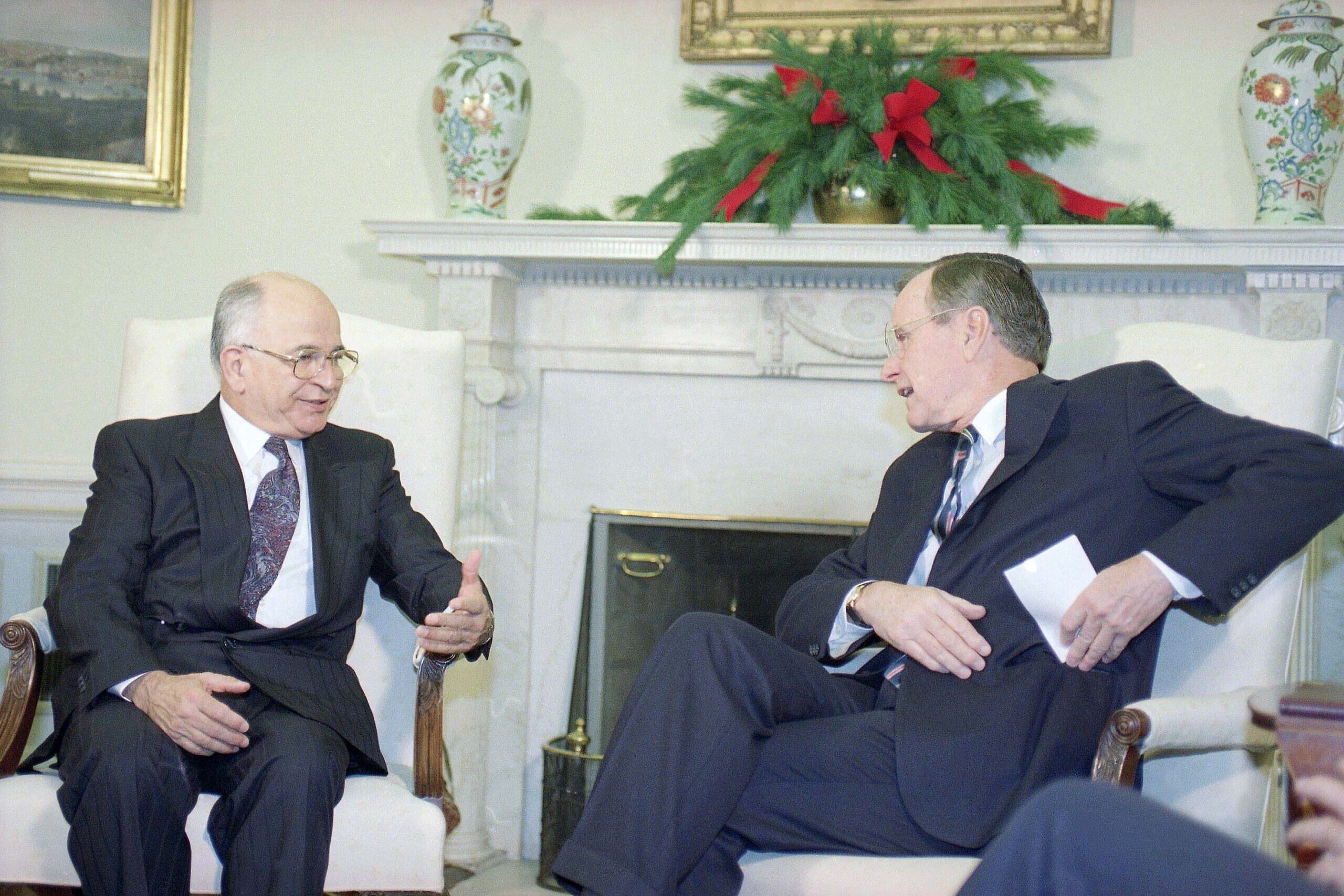
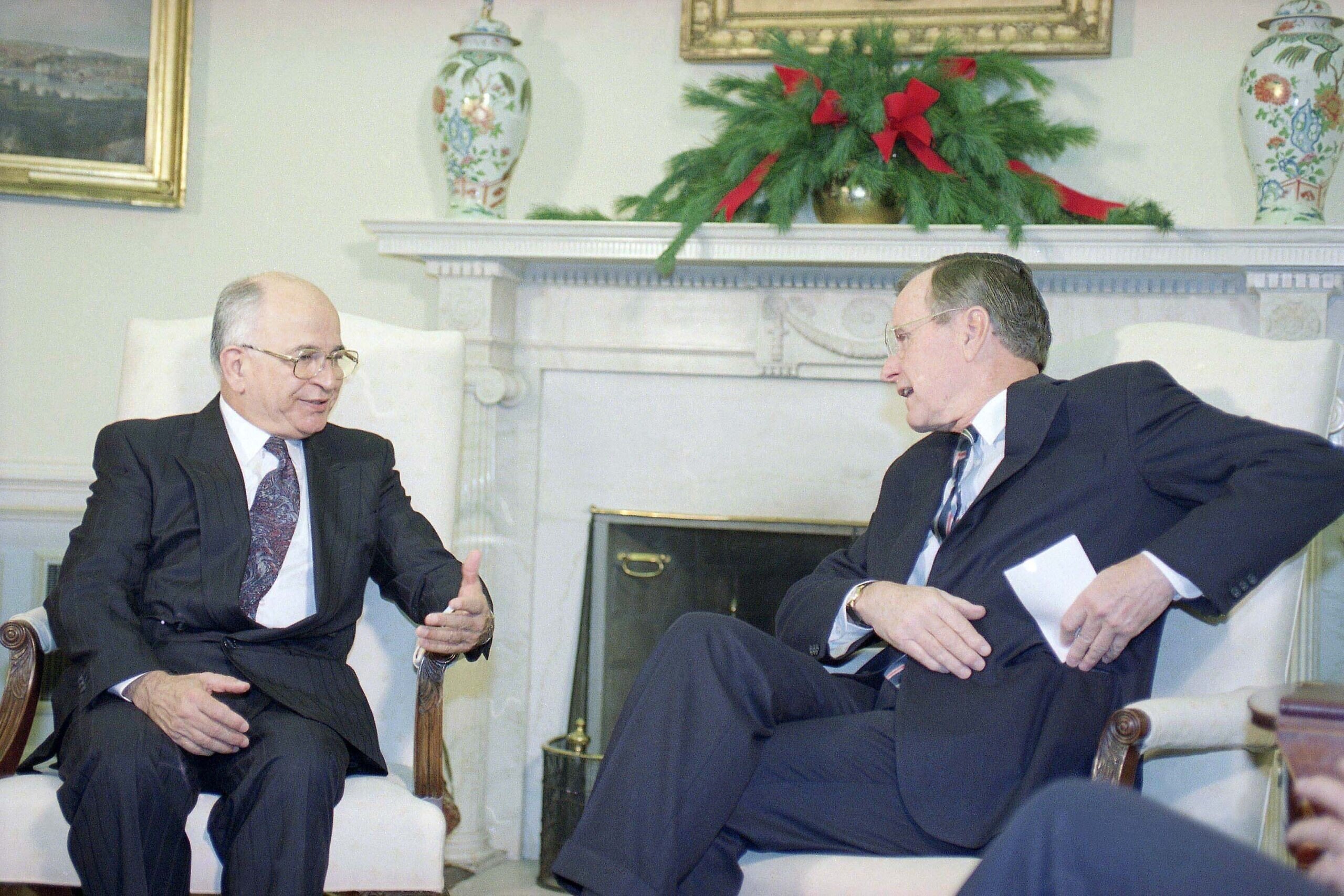
Yahya Kirdi, a Syrian businessman and owner of several sports clubs, lays down his vision for the prospects of a new Syrian-Israeli peace.
Syrian-born businessman Yahya Kirdi envisions a future where Syria and Israel can coexist peacefully despite decades of hostility. In an extensive interview, he shared his background, thoughts on Syria’s political landscape, and aspirations for regional peace.
Born in Aleppo, Syria, to parents of Turkish descent from Kilis, Kirdi’s identity straddles some of the multiple cultures that are Syria’s hallmark. After being stripped of his Syrian citizenship by the Assad regime, he now holds Canadian citizenship and has built a successful business career.
“I own soccer clubs in Europe and Dubai, as well as companies specializing in sports marketing and petroleum trade,” Kirdi explained. His professional background includes being a former professional soccer player and working with UNICEF in 2009.
When asked about his willingness to speak with Israeli media, Kirdi expressed no reservations. “Israeli media are advanced, developed, and free, pursuing truth regardless of where it leads,” he stated. “This presents an opportunity to convey my voice and that of Syrians to the Israeli and Jewish people – that we desire to live peacefully alongside our Jewish neighbors.”

Kirdi rejected the notion that Arab populations are inherently hostile toward Israel, characterizing this as “a deception perpetuated by Arab rulers to prevent their people from seeing the truth.”
When prompted to describe the reasons for the fall of the Assad regime in his view, Kirdi spoke frankly about what he sees as the geopolitical realities behind recent developments.
“The collapse of [Bashar al-]Assad was essentially a convergence of American, Turkish, and Russian interests,” he commented. “To be realistic, the fall involved surrendering territories without fighting. Additionally, Israeli strikes against Hezbollah and the withdrawal of Iranian militias played a crucial role in bringing down Assad’s regime.”
Kirdi expressed concern about the rise of Ahmed al-Sharaa’s administration in parts of Syria. “A man unknown to Syrians before, yet on terrorist watch lists and wanted by international justice, who pledged allegiance to al-Qaeda leaders Ayman al-Zawahiri and Osama bin Laden,” Kirdi said with evident frustration, questioning the international community’s relative silence about Sharaa’s rise to power despite his connections to ISIS, Jabhat al-Nusra, and Hay’at Tahrir al-Sham.
“His current rule is totalitarian and sectarian, knowing only the language of bloodshed,” Kirdi asserted about the new Syrian leader. “We should understand that changing Afghan-style clothing doesn’t mean changing the ideology within al-Sharaa himself.”
The Islamists backing Sharaa’s admin.
The businessman criticized Sharaa’s administration for relying on non-Syrian, hardline Islamists, including “elements from Hamas and Islamic Jihad among his fighters, as well as militants from Chechnya, Uzbekistan, Uyghurs, Egyptians, Moroccans, Tunisians, Algerians, and Libyans.”
Kirdi questioned whether such a diverse array of foreign fighters could truly represent Syrian interests.
“This is an Islamic jihadist movement with no connection to Syrian identity,” he argued. “We rose against Assad senior and then Assad junior and sacrificed our lives. There are thousands of honorable military personnel who defected from Assad’s regime and paid a heavy price – they are now marginalized under a one-color totalitarian rule that gives no space for others to participate in political life.”
The businessman emphasized that Sharaa’s rule fails to respect Syria’s diverse fabric, which includes “Islam, Judaism, Christianity, Armenians, Druze, Circassians, Kurds, and Syrian Turkmen.”
He characterized the new Syrian leader’s inclusive gestures as “merely theatrical performances for global media,” while the reality remains “a totalitarian Islamic rule – an extremist Islamic emirate relying on non-Syrians for governance.”
Kirdi revealed he had filed complaints against the UN secretary-general and UN envoys to Syria Geir Pedersen and his predecessor Staffan de Mistura, accusing them of corruption and collusion with certain Syrian opposition members. He also mentioned he is promoting legal action against Bashar Assad and “4,000 members of Assad’s gang” through Canadian courts, with the case reportedly transferred to the International Court of Justice.
The Syrian-Canadian businessman also referred to the role of Qatar as a mediator in Middle Eastern conflicts, particularly after October 7. Kirdi expressed skepticism. “My point of view, which I shared with close friends in the US and Canada, was that Israel should be careful, very careful. Because first, Qatar relies on information from people who are not Qataris. It has Palestinian, Arab, European, and even American political advisers. Even media professionals who hold Israeli citizenship through media outlets it [Qatar] owns. This is clear to everyone. How can this be a mediator and a judge at the same time? With all due respect to the Qataris, you cannot succeed with this mediation, because it will not be fair. Qatar succeeded in moving the World Cup it hosted from June in the summer to winter, but it failed in the negotiations on the Hamas and Israelis case.”
Kirdi suggested Canada would be a more suitable mediator than Qatar, claiming the war might have ended sooner with different facilitation.
“I, personally, have a solution and plan to stop the war that would benefit all parties and end the conflict in Gaza – a very suitable solution for the Israelis and Prime Minister [Benjamin] Netanyahu, which friends in Israel appreciated,” he claimed, without providing further information.
When discussing the future political landscape of Syria, Kirdi advocated against federalization or division into multiple states.
“We are deeply concerned that the current policies pursued by authorities may lead to partition, which benefits no one, neither internally nor externally. Partition or federalism would make Syria available to extremists and radicals who threaten regional security,” he warned.
Instead, Kirdi envisioned “a single Syrian state led by an authority built on modern foundations, where businessmen contribute significantly to reconstruction and improving the economy.”
He stressed the need for “wise leaders who understand the people’s interests and how to protect them, who are aware of international conditions and work diligently with others to prepare Syria and the region for peace.”On the possibility of peace between Syria and Israel, Kirdi was optimistic.
“Yes, we believe peace is possible and see that the Syrian people are ready for a peace process with Israel,” he stated. “We don’t believe that the long-term incitement carried out by the regime has established eternal hatred. The people have become rational and aware, knowing their interest lies in peace, provided there is a reasonable leadership capable of securing Syrians’ rights diplomatically, and Israeli cooperation with the idea of peace that guarantees people’s peace, not regimes’ peace.”
Kirdi highlighted the potential role of business leaders in fostering peace.
“We believe that businessmen can play a major role in this, and historical experience has proven that the best to lead peace are sincere businessmen surrounded by a rational group of politicians and thinkers,” he said. “We hope to have a role in peace because this serves Syrians and all peoples of the region.”
Regarding his own political future in Syria, Kirdi distanced himself from the current administration, despite rumors of being offered a high-ranking position.
“We don’t see a political role for ourselves under an authority that seeks to entrench dictatorship, and we don’t accept holding a position in such an atmosphere. We want a civil, democratic state,” he affirmed. He would participate only when the system genuinely serves Syrian society and fulfills its aspirations, he indicated.
On the Kurdish question in Syria, Kirdi acknowledged strong fraternal relations between his community and Kurdish Syrians but expressed concern about certain Kurdish political factions.
“Everyone knows our relationship with the Kurdish component is fraternal, with unbreakable ties between us, having lived side by side in this region,” he said. “However, the problem is that there are Kurdish political parties that want to carve out a part of Syrian territory and attach it to separatist projects that threaten Syria’s national security and the security of our neighbor Turkey and other neighboring countries.”
On regional dynamics, Kirdi referred to Turkey’s significant influence in Syria.
“Turkey has a tremendous ability to influence Syria, exceeding any neighboring country,” he said, citing shared borders, social interconnections, and history. “I cannot imagine a solution and stability in Syria without reaching an understanding with Turkey. We must address their concerns and accept their soft contribution to reconstruction and stability, but also stand against any hegemonic tendencies.”
Perhaps most striking were Kirdi’s views on peace with Israel. “Peace has always been possible if it were from people to people,” he asserted. “There is no enmity between Syrians and Jews; the dispute between the Syrian state and Israel concerns the Golan Heights, which can be managed through dialogue.”
He characterized the current moment as a “historic opportunity” for peace between the two peoples, contingent upon Israel’s willingness and international support for developing a moderate, democratic civil authority in Syria.Kirdi highlighted the role of business leaders in fostering peace.
“You cannot talk about the triumph of democracy without a free economic system,” he stated, emphasizing that economic development would be decisive in gaining popular support and shaping politics.”
Kirdi spoke warmly about Syria’s cultural heritage and openness. “The Syrian people are simple and kind. They love others, love goodness, love work, and hate wars,” he said. “In all Syrian cities, from Latakia to Aleppo to Damascus to Deir el-Zor to Raqqa to Hasakah, we have neighborhoods and streets named after Jewish quarters. Jews were our neighbors.”
His message to readers emphasized the Syrian people’s exhaustion with both authoritarianism and war.“Trust the Syrians, for they are the children of ancient civilizations. They are not extremists and are open to all cultures of peoples who seek peace,” Kirdi concluded.
NIL
Josh Pate questions inclusion of Group of Five in CFP, suggests a G5 Playoff
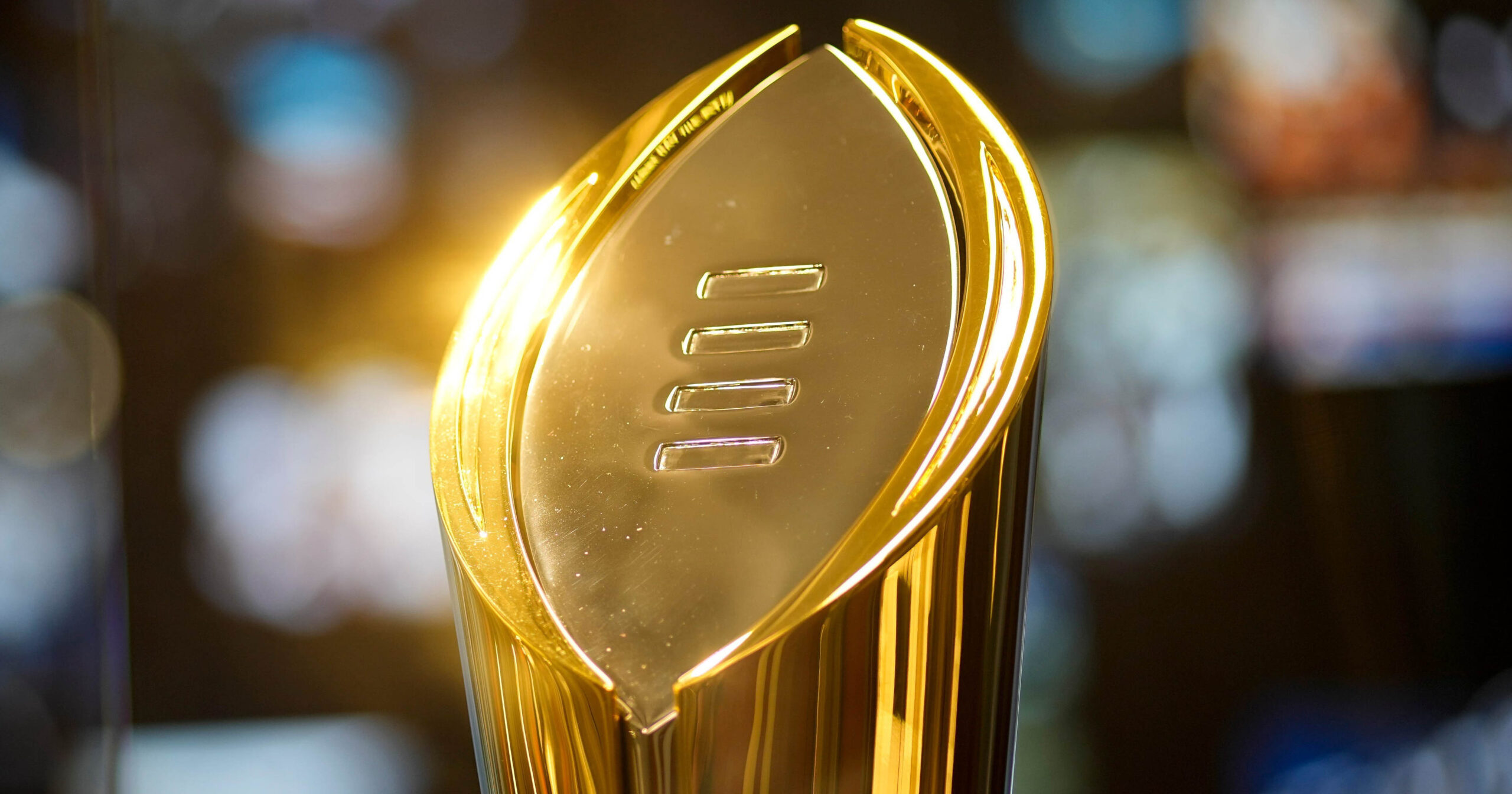
One of the biggest storylines of this edition of the College Football Playoff is the inclusion of two champions from the Group of Five, with No. 11 Tulane in out of the American and No. 12 James Madison in out of the Sun Belt. That has caused quite a lot of questions and criticism, with a suggestion now made to potentially fix that by Josh Pate.
During his reaction show to the reveal of the playoff on Sunday, Pate touched on the topic of the inclusion of the G5. He wondered about that aspect of this model altogether, as he thinks better contenders aren’t making the field for teams who may have next to no chance in the CFP.
“I do think a lot of people have started to throw around one of the proposals that we’ve made on the show, and that is, if you’re going to make the playoff, shouldn’t you at least have a minimum baseline ranking? I don’t know what that ranking would be. Shouldn’t you have to be Top-15? Shouldn’t you have to be Top-20?” said Pate. “A lot of people are looking at the fact that we’ve got two G5 teams in here, and, of course, that’s a joke. That’s a complete joke. It’s an utter disgrace to the overall spirit of what this thing is supposed to be about, that I got a team like Notre Dame sitting at home. Notre Dame could legitimately make a run to win a national title. They have that maximum capability. They’re going to sit at home, so that we made room for a team to be a three-plus touchdown underdog in Eugene, Oregon. So, yes, even the most diehard of G5, Cinderella supporters out there understand, from a pure principle standpoint, this makes no sense. And so I do think something will be done to address that.”
Pate addressed those same points later on in the show. With respect to the seasons just had by Tulane and James Madison, the fact is that they will be massive underdogs respectively in their first-round games against Ole Miss and Oregon, with little chance of them winning even a game, let alone multiple, as part of the College Football Playoff. That is why he doesn’t understand their insertions, even if that’s how the bracket is built, as teams like this from the Group of Five are unlikely to compete with these level of teams from the Power Four.
“Now we have to get uncomfortable. Now we have to broach the subject everyone is talking about. So, we have two G5 teams in the playoff – Tulane-Ole Miss, JMU-Oregon…So, people have some really, really strong thoughts on this. I’ve had strong thoughts on this for a while. I’ve told you for a while. It makes no sense that college football is structured the way it is, for many reasons, but it makes no sense that college football pretends that 136 teams are playing the same sport. It’s so obvious they’re not,” said Pate. “You got to get some smart people in the room to understand we can restructure the playoff, or we can rebuild the playoff entirely actually, to where you don’t have G5 inclusion in the main playoff, and still have a very, very nice, revenue-producing product that is exclusive G5. You know, a world where JMU can actually win the title, or Tulane could actually win the title. Now, everybody, logically, watching this or listening to this knows Oregon is not playing the same sport at JMU. Everybody knows that Ole Miss is not playing the same sport as Tulane. Everybody knows that. But, for some reason, we’re still forced to pretend that they are when it comes playoff time. So, you can say what I just said without having disdain or hate in your heart for the G5. I feel the total opposite! I love G5 football. I’d like to build a world, I’d like to build an ecosystem where it thrives, not cutting it out of this system to watch it die. That’s not how that has to happen.”
“The mental gymnastics that proponents of G5 inclusion put themselves through are so mind-numbing that I just remove myself from the conversation. Because the way I look at it is no G5 team is ever going to win this national championship. Certainly, they’re not. So, like, it’s never like they’re going to make a run in the playoff. The worst that happens is it takes away and robs us of what would be far more premier first-round playoff games, and then JMU and Tulane will get disposed of in the first round because they’re far inferior teams and then we’ll move on about the playoff. So, it’s not like I’m going to get burned,” Pate continued. “The argument you’re making is a very bad faith argument, if you’re making this one – ‘Well, you know, upsets have happened before!’. It’s so far away from the point that it doesn’t even deserve a reply, but here’s the reply. I don’t care if JMU goes and beats Oregon. It doesn’t disprove my point. My point is they don’t deserve inclusion in this format…The point there is we’re not playing the same sport. We’re not looking at the same sport…My point is not even that it’s impossible for them to pull the upset if they get in the playoff. My point is they shouldn’t be in the playoff to begin with because the road that they took looks way different than the road these other teams have to take.”
This comes a year after, in the original expanded format, Boise State (12-1), out of the Mountain West, earned a bye into the quarterfinals of the CFP. Now, a season later, Tulane (11-2) is in as the highest-ranked of the non-power conference champions after winning the American, while James Madison (12-1), due to the low rating of Duke (8-5) as the winner of the ACC Championship, managed to get in as well after winning the Sun Belt.
That all may have sounded like a lot of negativity for the G5, but, from there, Pate offered suggestions to better include them in the process of college football. He did, to a lesser extent, suggest the idea of relegation, with poor power teams moving down to make space for deserving mid-majors. His biggest idea, though, was creating a playoff specifically for the Group of Five, which Pate knows they would be able to market and sell, instead of them playing as part of the CFP.
“With all this money floating around right now, people are insane if they don’t think a G5 Playoff would sell, and sell big. Do you understand how desperate other networks are for quality postseason college football inventory?…You don’t think, if we took a package of G5 playoff games, and put them on any network, that it wouldn’t sell? Of course it would,” said Pate. “Invest in a G5 Playoff. Everybody wins. I’m not trying to box you out, by the way…So, the money is there to figure this out.”
“The argument it always boils down to is a fundamental argument. No one really looks at JMU and Tulane in the playoff and thinks to themselves, yep, purely from a competitive standpoint, this makes sense to me. You don’t think that…You want to make it because you want to make it. I’m talking about removing that lens, and looking at it purely from a logic-based, competitive standpoint,” continued Pate. “No one looks at this and thinks it makes sense, so the argument doesn’t come to that. The argument comes to, if we’re not involved in the College Football Playoff, we can’t make enough money to survive. And, what I’m saying is there is plenty enough money floating around the world of college athletics to get it figured out. That’s my point on that whole thing, and it should have long ago gotten figured out but it still hasn’t.”
This has now absolutely been a major talking point through the first two years in the expansion of the CFP. However, because of that, one way or another, Pate expects that we could see a change in that process because of it, as the playoff could be better balanced.
“I do think that there are changes coming,” said Pate. “I do think that that committee, just like they did this past year? They had one round, and then they adjusted their terms. And now they’ve had another round, and I think they’re going to adjust their terms again.”
NIL
Robert Griffin III sends strong message after major football program declines bowl game bid
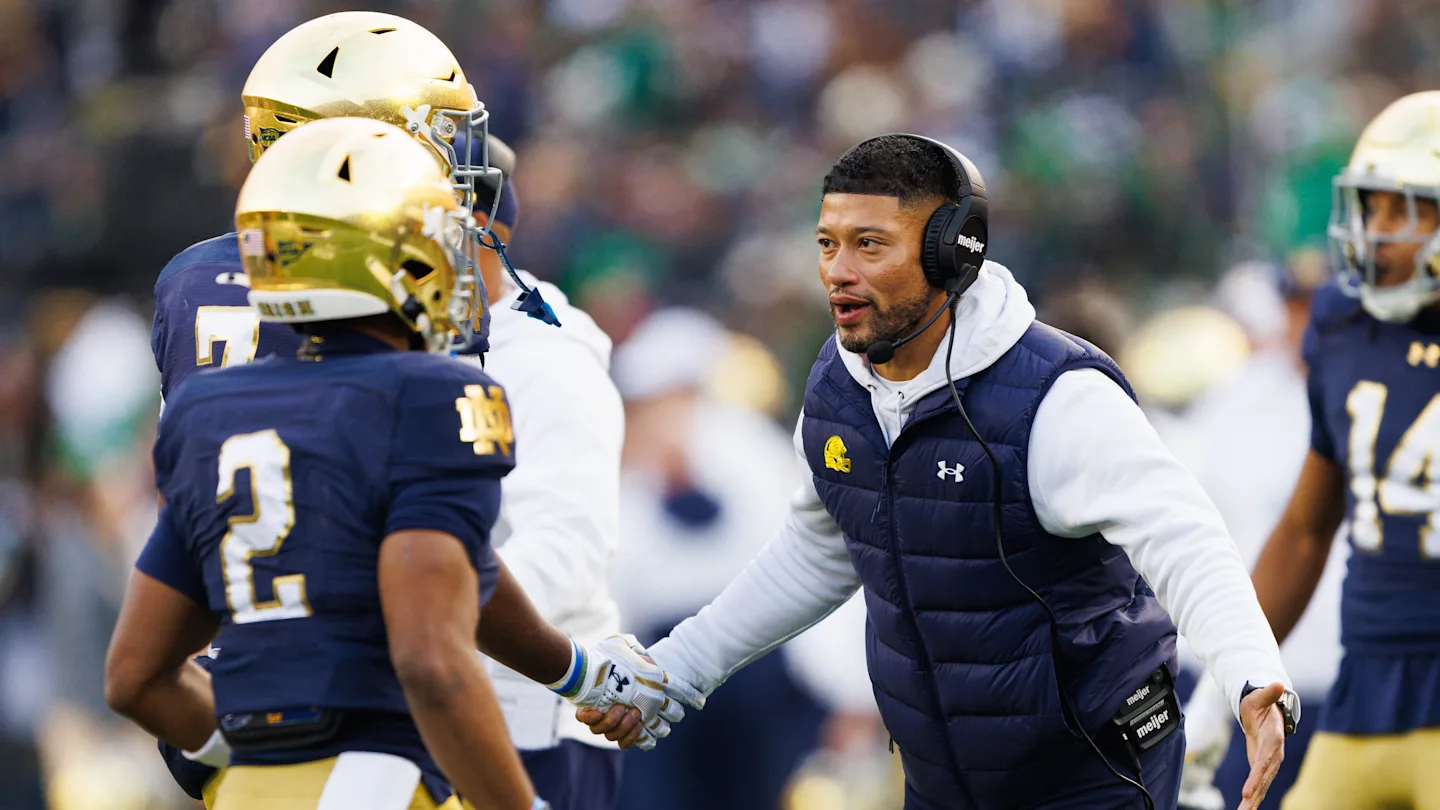
The 2025 College Football Playoff field was unveiled at noon EDT on Sunday.
Of the many difficult decisions made by the College Football Playoff committee, none was more notable than its decision to award bids to Miami (No. 10), Tulane (No. 11) and James Madison (No. 12) over Notre Dame, which sat at No. 11 in the final College Football Playoff rankings.
In response to the committee’s decision to exclude it from the College Football Playoff, Notre Dame declined any potential bowl bids as a form of protest.
“As a team, we’ve decided to withdraw our name from consideration from a bowl game following the 2025 season. We appreciate all the support from our families and fans, and we’re hoping to bring the 12th national title to South Bend in 2026.”
Notre Dame Football (@NDFootball on X)
— Notre Dame Football (@NDFootball) December 7, 2025
The decision sparked an online discourse about the potential precedent for future dismissal of bowl bids in college football. One proponent of Notre Dame’s decision was former Baylor and Heisman-winning quarterback and current FOX Sports college football analyst Robert Griffin III.
“I don’t blame Notre Dame one bit for deciding not to play in a Bowl Game when they should have been playing for a chance to win the National Championship in the College Football Playoff.”
Robert Griffin III (@RGIII on X)
I don’t blame Notre Dame one bit for deciding not to play in a Bowl Game when they should have been playing for a chance to win the National Championship in the College Football Playoff. pic.twitter.com/TgB0kAn85r
— Robert Griffin III (@RGIII) December 7, 2025
Declining a bowl bid was not the only step in Notre Dame’s efforts to secure a better future for the program. Ross Dellenger of Yahoo Sports and On3 reported that Notre Dame is guaranteed a College Football Playoff bid if it is ranked No. 12 or higher in the final poll beginning in 2026, per Notre Dame athletics director Pete Bevacqua.
“A newsy wrinkle from Bevacqua: As part of an MOU signed last spring, Notre Dame is assured of a CFP berth if it is ranked in the top 12 starting next year.”
Ross Dellenger (@RossDellenger on X)
A newsy wrinkle from Bevacqua: As part of an MOU signed last spring, Notre Dame is assured of a CFP berth if it is ranked in the top 12 starting next year.
If this year’s situation unfolds next year, the final at-large team (Miami) would have gotten bumped for No. 11 Notre Dame.
— Ross Dellenger (@RossDellenger) December 7, 2025
Notre Dame is one of three Power Four programs to decline a bowl bid in 2025. The other two are Iowa State (8-4) and Kansas State (6-6), both of which opted out of bowl bids in the wake of head coaching changes.

NIL
$2.1 million SEC quarterback announces he’ll forgo NFL Draft, return for 2026

One College Football Playoff program just received some major positive news ahead of their postseason run. One of the many flaws in the current CFB calendar is that players really have to make decisions on their futures before the playoffs are over, since they could be playing well into January — and past the deadline for transferring. Then, there’s the NFL Draft and that process to think about.
Luckily for Texas A&M, they have full assurance that their star quarterback, Marcel Reed, is fully locked in on the Aggie program amid any portal offers or professional attention. As part of an interview with former Heisman Trophy winner Robert Griffin III, Reed confirmed his intention to remain with A&M program next fall, returning for his junior season. On a recent episode of Griffin’s podcast, Outta Pocket, Reed as was asked point-blank whether he is coming back to Texas A&M for the 2026 season. His response:
“I’m coming back,” he said with a head nod. “I’ll be back.” Griffin went on to comment that, from his view, A&M seemed like the ideal home for Marcel Reed.
“I do too,” Reed responded, agreeing that A&M is the perfect fit. “I mean, I got offers after my freshman year, ” he added. “I thought that this was the best place to be. I didn’t think there was any reason to leave Texas A&M. I have the job and it’s mine to lose. But like, there’s no reason for me to leave.”
Marcel Reed stats, NIL valuation

The good folks at On3 put together a formula for calculating a player’s NIL and roster value based on real reporting on player compensation plus social media exposure and overall talent level. According to their esteemed metric, Marcel Reed checks in with a $2.1 million NIL evaluation. That puts him No. 13 among current college football players and No. 17 among all college athletes.
As a starting quarterback for one of the top 10 teams in the nation this season, you wouldn’t think there’s much reason for Marcel Reed to transfer away from Texas A&M. However, after the stellar year he put together, NFL scouts certainly have him on the radar.
Across 12 regular season games, Reed threw for just under 3,000 yards and will almost certainly eclipse that milestone in the postseason. He also tossed 25 touchdowns vs. just 10 interceptions and added another six touchdowns as a runner to give him more than 30 on the year. Reed’s rushing tally is currently 466 yards. Easily one of the best dual threat quarterbacks in the country, Reed projects to return to a contending Aggie squad in 2026 as a Heisman Trophy frontrunner and potential NFL first round pick,.
More on College Football HQ
NIL
Dick Vitale finds College Football Playoff selection committee far from awesome, baby
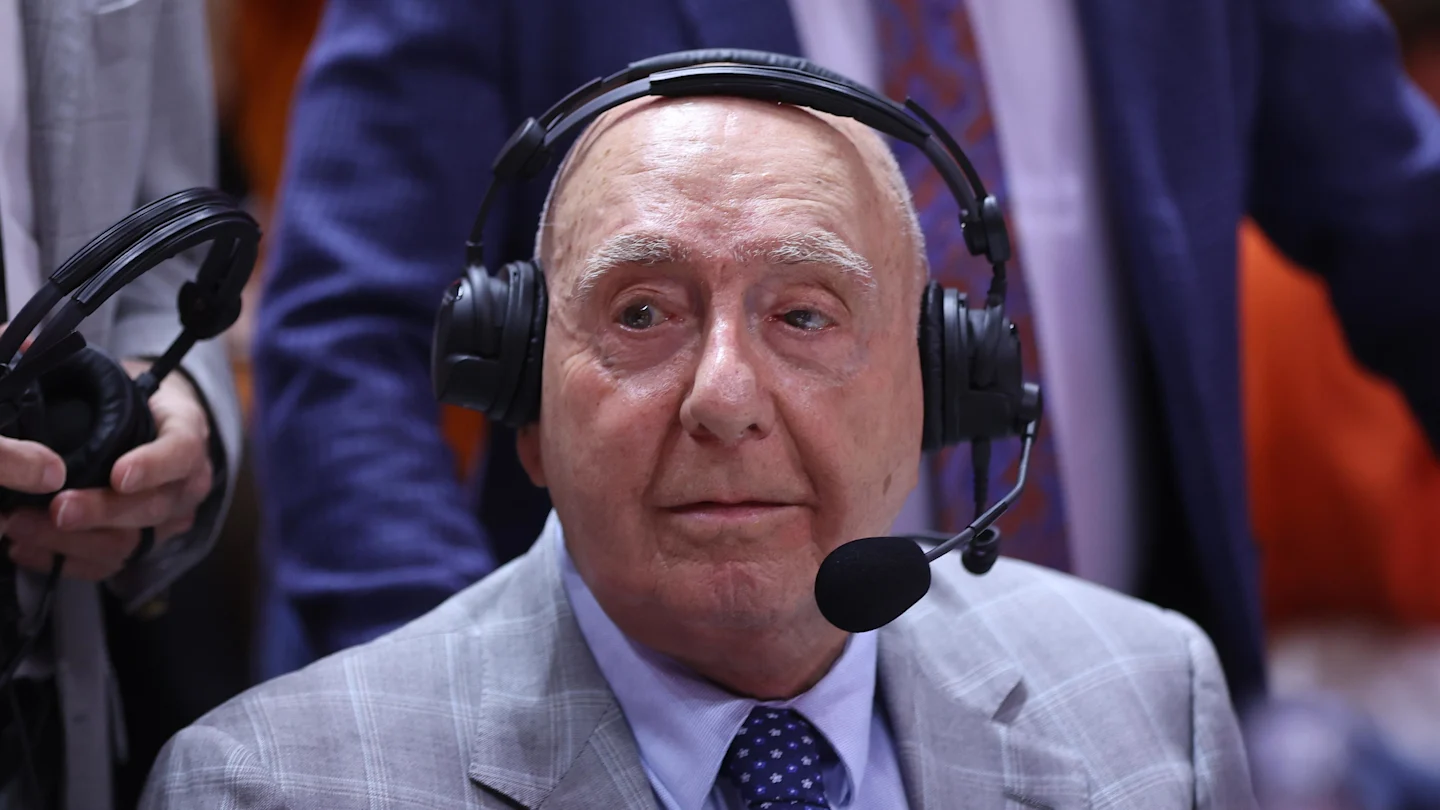
Dickie V knows football
Dick Vitale is well-known and loved as a passionate broadcaster and follower of college basketball. His boundless enthusiam and endless catch phrases have dominated college basketball for several decades. But Vitale pretty clearly knows the gridiron as well, and directed some harsh comments on Sunday to the College Football Playoff selection committee. The topic of discussion was Notre Dame, long a Vitale favorite, as he acknowledged 11 family members who have graduated from the school.
Notre Dame’s rough situation
Notre Dame was ranked as the first team out of the College Football Playoff. The two biggest points of contention for the Irish and their fans are that three-loss Alabama remained ahead of them despite a 28-point loss in the SEC championship game, and that Miami– consistently ranked behind Notre Dame in the CFP weekly rankings– somehow jumped them in the final week despite neither team playing a game.
Vitale speaks out
Vitale shared a video to social media with comments he directed straight toward the CFP selection committee.
I’m really having a tough time. Every Tuesday for five consecutive weeks, you post on ESPN, the teams you think, the top 12 that would be eligible at that time to qualify for the Playoffs. Every week, EVERY, not two of the weeks, but all five weeks, you had Notre Dame over Miami. You had Notre Dame in there every week. How logically do they drop out on the last week, when they’ve done nothing in terms of losing a game during that period? Miami lost two games to unranked teams. I have a real tough time with that…. How do you explain the five weeks of having Notre Dame there and then bouncing them? They did zilch in terms of anything in causing that to happen. They didn’t lose a game. They blew out everybody they played, and the bottom line is they got a raw deal. They got a raw deal. Those kids belong in the Playoffs.
Dick Vitale
Irish reaction
Despite the emotional pitch of his video– and Vitale acknowledges that he’s a fan of the Irish– it’s hard to argue with Vitale’s fundamental talking points. Notre Dame pretty clearly felt the sting of CFP exclusion, as the Irish then turned down non-CFP bowl berths, indicating that for the Irish, the season ended up as CFP or bust. But even if the Irish are outside the Playoff, they do have one of the most notable voices in college sports indicating that their CFP exclusion is a difficult-to-justify stance that wrongs an excellent team.

NIL
Every college football team that declined their bowl game on Sunday
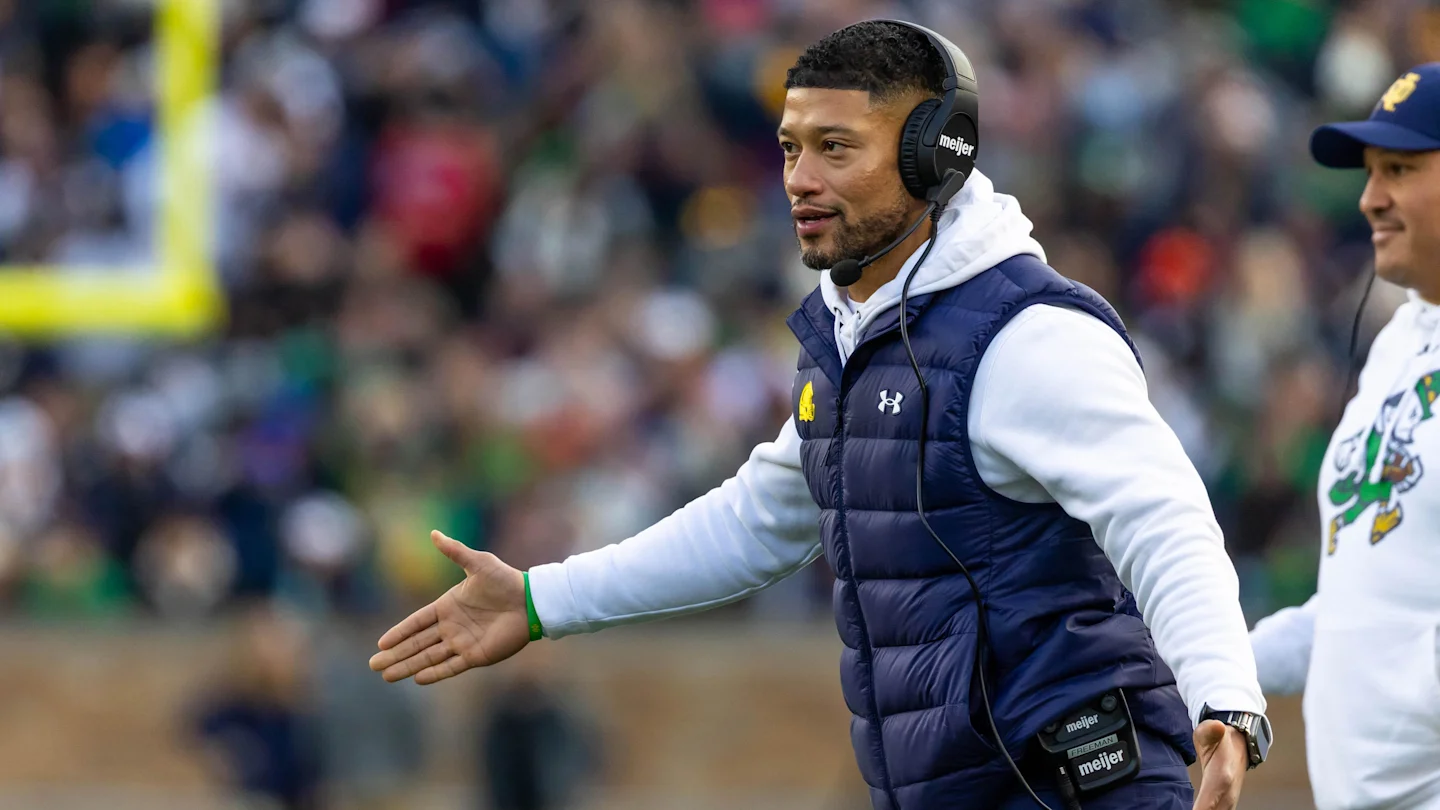
Years ago, schools basically cued in line to plead for a spot in a post-season bowl game. Of course, that was an era before every breakfast cereal, motor oil, or obscure mortgage company was sponsoring its own personal bowl game. But Sunday emphasized a growing trend with a number of teams saying ‘thanks, but no thanks’ to bowl berths on Sunday. The final count included at least 10 teams that turned down bowl berths.
The denials sprang from a variety of potential reasons– from pouting over exclusion from the College Football Playoff to teams not wishing the dive into postseason play in the midst of coaching changes to teams that had given up hope at a bowl and moved on with the offseason. But Sunday’s massive exodus of teams NOT playing in bowls certainly made some college football history.
The Wrath of the Irish
Notre Dame’s bowl denial will probably draw the most attention. The Irish finished one spot out of the College Football Playoff, and accordingly decided that they would pass on the gamut of lower bowls. Notre Dame was purportedly offered a spot in the Pop-Tarts Bowl to play the team ranked behind them in the CFP rankings, BYU, but turned it down flat.
All of college football (and even some college basketball celebrities) weighed in on the propriety of the Irish bowl declination, but it’s a massive move that could reverberate throughout future bowl seasons.
— Notre Dame Football (@NDFootball) December 7, 2025
Two Big 12 Coaching Shifts
Kansas State and Iowa State each turned down bowl invitations. In both cases, there are coaching transitions underway. Iowa State lost Matt Campbell to Penn State and is replacing him with Jimmy Rogers. Kansas State saw Chris Kliemann retire and Collin Klein replace him.
Despite the business excuse, the Big 12 made it clear that the decision was not a popular one at the league level. Both schools were fined $500,000 for turning down bowl bids.
The Big 12 fines Kansas State and Iowa State $500,000 each for opting out of a bowl. pic.twitter.com/TLQcgkB6a1
— Ross Dellenger (@RossDellenger) December 7, 2025
Bowl Denial Dominoes (or Sunday Choas for the Birmingham Bowl)
While the NCAA had exactly the number of teams with six or more wins that it needed to fill the bowl vacancies, these three teams declining bowl berths caused the bowls to have to dip into the pool of 5-7 teams. A multitude of 5-7 teams declined bowl bids before Appalachian State finally completed the bowl picture by agreeing to play Georgia Southern in the Birmingham Bowl.
At least seven teams were reported to have turned down last-minute bowl invites off of 5-7 seasons. The list includes Florida State, Auburn, UCF, Baylor, Rutgers, Temple, and Kansas. The 11th hour bowl chaos led to more than a few jokes online. While the 82nd bowl berth was finally filled, at least 10 teams passed on postseason play on a memorable Sunday.
We interrupt for a Public Service Announcement: if you’re a football team (must have at least 11 players) & would like to play in a really cool bowl game & be on ESPN vs. Georgia Southern, please show up at Birmingham’s Protective Stadium by 1 pm Dec. 29th kickoff. Thank you
— Brett McMurphy (@Brett_McMurphy) December 8, 2025
NIL
Are Ohio companies interested in NIL deals with high school athletes?
Dec. 8, 2025, 6:05 a.m. ET
Fred Horner bleeds black and orange.
The owner of Advanced Industrial Roofing is a Massillon football booster and member of the Sideliner program, an initiative where community members act as mentors for varsity players, providing personal guidance and support.
He’s willing to help out Washington High School athletes any way he can. But don’t expect his company to start handing out lucrative name, image and likeness deals to high school students now that the agreements are legal in Ohio.
-

 Rec Sports2 weeks ago
Rec Sports2 weeks agoFirst Tee Winter Registration is open
-

 Rec Sports2 weeks ago
Rec Sports2 weeks agoFargo girl, 13, dies after collapsing during school basketball game – Grand Forks Herald
-

 Motorsports2 weeks ago
Motorsports2 weeks agoCPG Brands Like Allegra Are Betting on F1 for the First Time
-
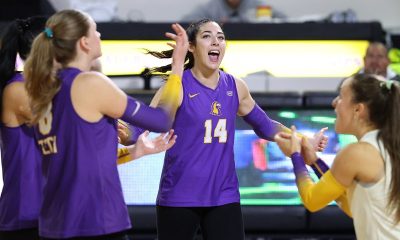
 Sports3 weeks ago
Sports3 weeks agoVolleyball Recaps – November 18
-

 Motorsports2 weeks ago
Motorsports2 weeks agoF1 Las Vegas: Verstappen win, Norris and Piastri DQ tighten 2025 title fight
-
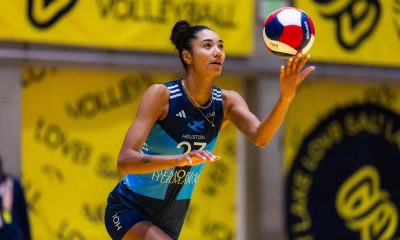
 Sports2 weeks ago
Sports2 weeks agoTwo Pro Volleyball Leagues Serve Up Plans for Minnesota Teams
-

 Sports2 weeks ago
Sports2 weeks agoUtah State Announces 2025-26 Indoor Track & Field Schedule
-
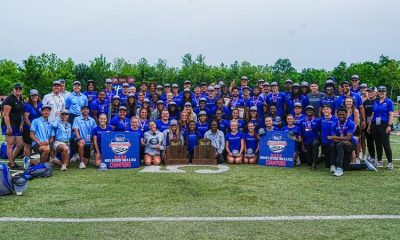
 Sports2 weeks ago
Sports2 weeks agoSycamores unveil 2026 track and field schedule
-

 Motorsports2 weeks ago
Motorsports2 weeks agoRedemption Means First Pro Stock World Championship for Dallas Glenn
-

 Sports2 weeks ago
Sports2 weeks agoTexas volleyball vs Kentucky game score: Live SEC tournament updates
















